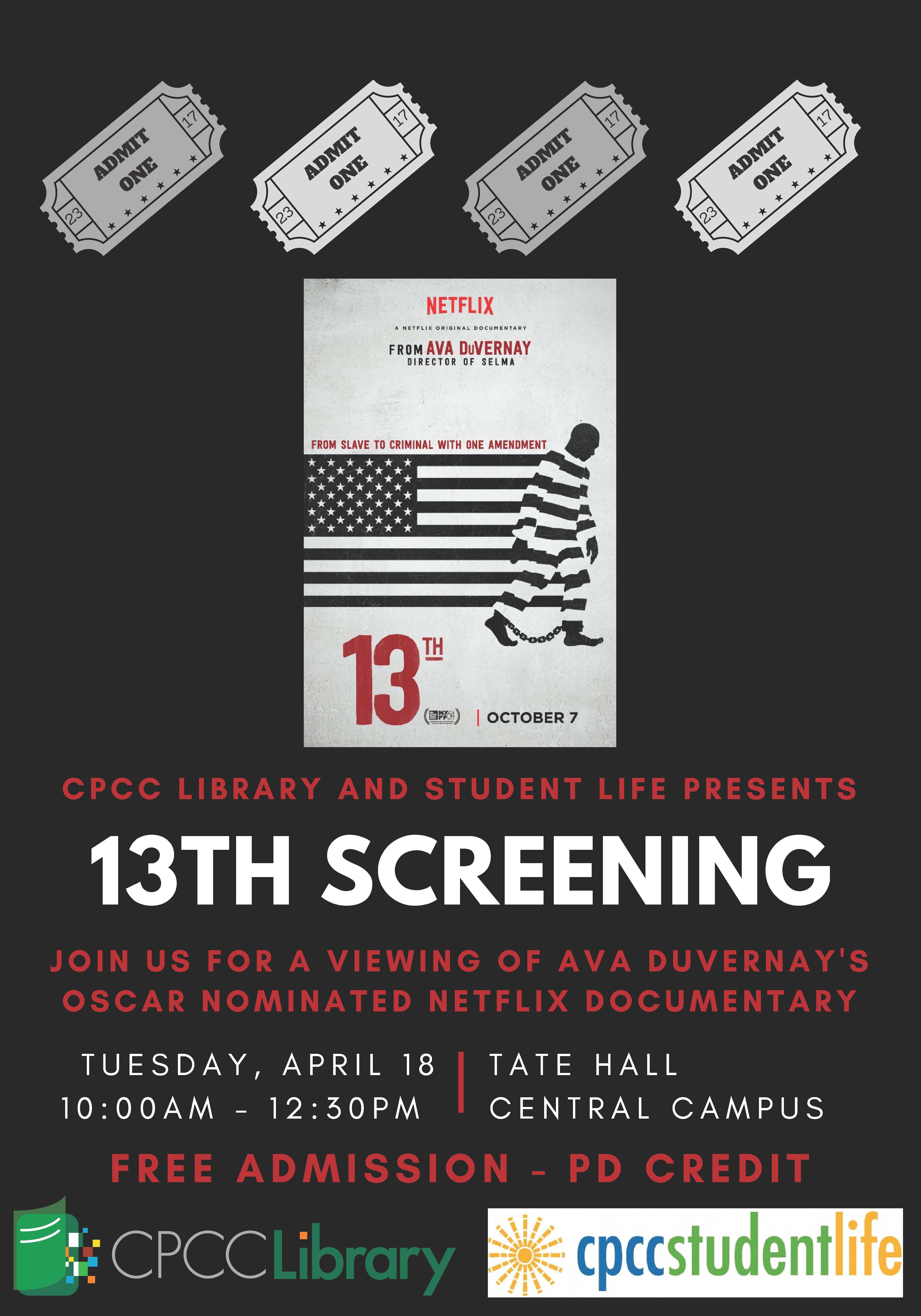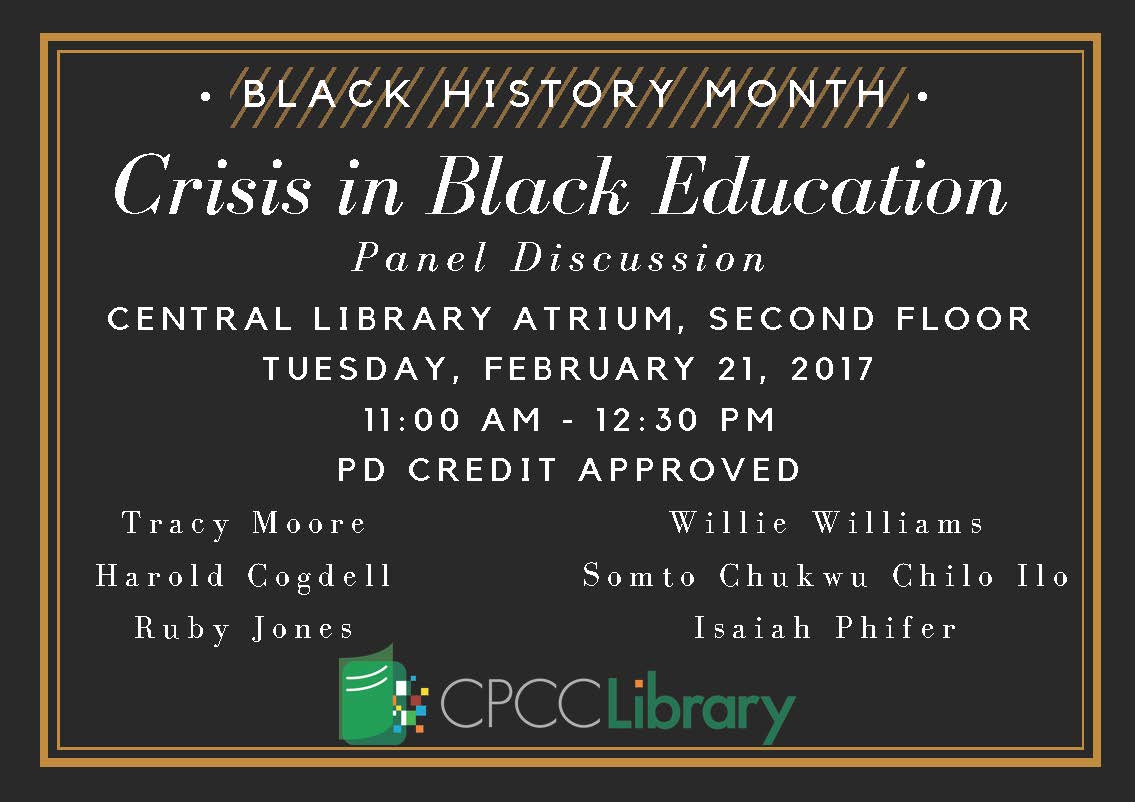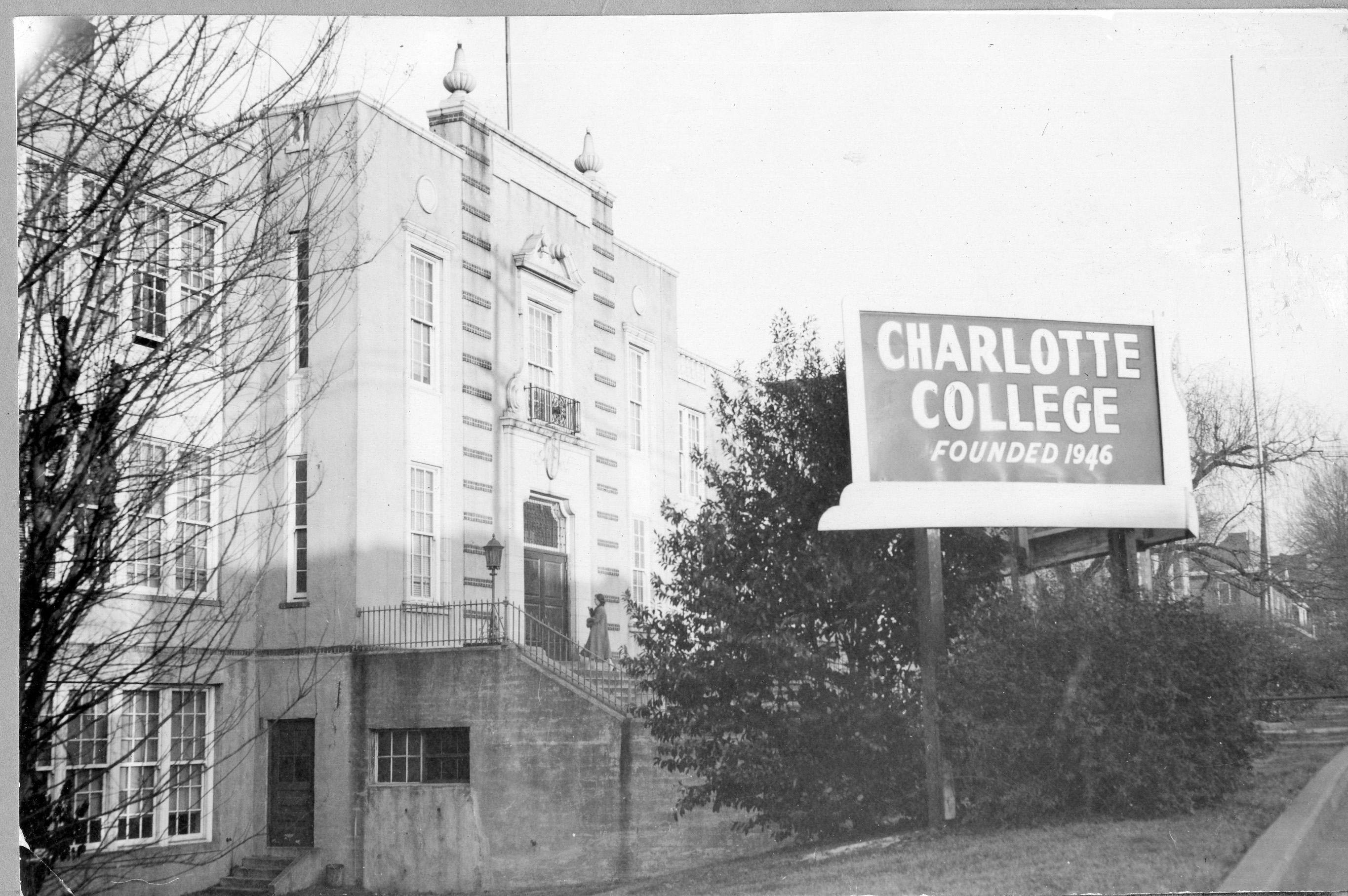All posts by Doug Short
Library Sponsored Sensoria Events
CPCC Library is hosting Sensoria programs across campuses:
Author Showcases are taking place at Central and Cato.
- At Central, Gavin Edwards, “Author of The Tao of Bill Murray: Real-Life Stories of Joy, Enlightenment, and Party Crashing,” will be speaking Monday, April 3, at 11:30 AM in the Library Atrium.
- At Cato, “Ed Williams, former editorial page editor of the Charlotte Observer, will share his wisdom and wit with CPCC audiences.” He will be speaking Wednesday, April 5, at 9:30 AM in CT024.
Harris and Cato have Edible Book Fests. Students, faculty, and staff are invited to create an “edible book” inspired by a favorite tale, a pun on a famous title or simply in the shape of a book, scroll, or tablet. All entries will be exhibited, documented, and then eaten!
- Harris hosts the Edible Book Fest on Monday, April 3, at 5:30 PM.
- Cato hosts the Edible Book Fest on Wednesday, April 5, at 11:30 AM.
At Harris, the library is presenting a film. Staff will be showing and discussing Girl with a Pearl Earring. It takes place Friday, March 31 at 1 PM, in the Harris Student Life Lounge.
CPCC Library is hosting Book Sales throughout the week. Stock up early on Christmas and birthday presents, or just pick up something interesting to read!
- Levine, Harper – All week.
- Cato – Tuesday, Wednesday
- Central – Wednesday, Thursday
CPCC Library is also participating in World War I Centennial events as part of a grant. On Thursday, April 6, at 9:30 AM at Central Campus, in Tate Hall, there will be, “a program commemorating the 100th anniversary of the U.S. entry into World War I in 1917. Mecklenburg County played a role in the war as a training camp, Camp Greene, was located in the area to prepare troops before going to Europe.”
At Central, there will be an Architectural Technology exhibit and reception in the Library Atrium on Tuesday, April 4, all day.
There will be a Green Roof reception at the Central library on Wednesday, April 5, to celebrate the new green roof over Pease Auditorium, adjacent to the library.
Author’s Showcase with Gavin Edwards
Black History Month Event: Crisis in Black Education
Love Your Library!
Student Resource Days – Come Get to Know Your Library!
Interested in learning what services your campus library has to offer you? Each campus offers a Student Resource Day that allows students a chance to learn more about how various college departments can assist you with your success as a student. Come visit the library table at your local campus Student Resource Day!
Student Resource Days are as follows:
Harper Campus – January 24
Central Campus – January 25
Merancas Campus – January 26
Levine Campus – February 2
Harris Campus – February 7
Cato Campus – February 8
Fine Forgiveness Days
From November 14 to December 12, 2016, the CPCC Libraries will be hosting Fine Forgiveness Days. During this period, fines accrued from overdue items will be forgiven at all campus libraries in exchange for a donation to CPCC’s Single Stop program.
How does fine forgiveness work?
- For every box or pack of requested items from the list below $4.00 in fines will be waived. Single items will not be accepted. For instance, an individual serving of Lance crackers will not be accepted, however an 8 pack of crackers will be.
- A maximum of $20 in fines will be waived from any account.
- Only fines are waived – replacement fees for lost books are not eligible.
- No credits for future fines will be issued. Fine Forgiveness Days is for existing fines only.
The following items are requested for donation for Fine Forgiveness Days:
- Microwave Popcorn (Boxes)
- Hot Cocoa (box of 8 or 12)
- Apple Juice (box of 8 or 12)
- Water (6 or 24 pack)
- Trail Mix or Nuts (Box or individual bags)
- Granola Bars, Fruit Bars, Breakfast Bars (box of 6)
- Oatmeal (Instant, box of 12), Lance Crackers (8 pack)
- Tissues (pocket pack 8 individually wrapped)
Donations will be accepted even if you don’t have fines!
National Archives Month, Week 3 – History of the Library
Did you know that when Central Piedmont Community College opened in July of 1963, the library was located in the basement of the Central High building? Although this building was used for storage by some departments of CPCC in its beginning years, the growing concern of where to house student resources (library materials in particular) was one of the main drivers of the 10-year master plan initiated by Dr. Hagemeyer and the Board of Trustees in 1964.
AR.0035, Student News Publications Collection: The Prospector – Vol. III, Number III, 1968
Construction of the library began in 1966 and was completed by J.N. Pease and Associates. By 1968, after great coordination efforts put forth by the library director, Miss Phoebe Oplinger, the Learning Resource Center had a new four-story building to call home in the center of campus. Here, students finally had a dedicated space where they could browse the card catalogs or the floors of stacks while searching for the perfect book. Students could even visit the School of Nursing which was located on the fourth floor (this was long before the English department moved in). One thing was for certain, from the very beginning the library was where students and staff alike went to gain knowledge; where their knowledge became power.
AR.0036, Photographs and Negatives Collection.
As the years have passed and technology has evolved, the Learning Resource Center has progressed as well. In the 1970s and 1980s, the use of the card catalog was still very important, but access to technologies such as audio and video players, and eventually computers, prompted the creation of media centers and computer labs.
AR.0036, Photographs and Negatives Collection.
By 1993, under the leadership of Dr. Zeiss, CPCC began its 10-year master plan which would grow CPCC from one campus into six campuses, as well as satellite campuses. To fulfill the ever-growing student population, the inclusion of library buildings was involved in every step of planning, so as to continuously provide students with the support and resources they need.
Today, all CPCC campus libraries provide resources to over 200,000* patrons each year; an astounding number compared to more than 30 years ago! As student needs continue to evolve in the coming years, the library and CPCC will continuously adapt to fulfill these ever-changing needs. For more information on services and assistance that any campus library can offer, please visit www.cpcc.edu/library.
*this information is taken from the annual gate count compiled by library staff each year.
Study Room Now Available at Cato for Paralegal Students
A new study room is now available for students enrolled in the paralegal technology program. It’s located within the Cato Law Library- Cato I on the second floor, Room 200. The room includes 2 small conference tables, 8 chairs, a whiteboard with markers and erasers, and a computer station for the convenience of study groups between 2 and 8 persons.
Reservations can be made up to 2 weeks in advance via http://www.cpcc.edu/library/library-services/study-rooms.
A confirmation e-mail will be sent after each booking acknowledging the request. Upon arrival students must confirm reservation at the service desk.
For the spring 2016 semester, the Cato Law Library Study Room is available the following days:
- Monday – 8:00 am to 5:30 pm
- Wednesday – 8:00 am to 5:30 pm
- Saturday – 9:00am -1:00 pm
The CPCC Libraries is excited to be able to provide students with the space and equipment needed to succeed.
National Archives Month, Week 2 – Founding of CPCC
This week’s post for Archives Month focuses on the founding of Central Piedmont Community College. Central Piedmont Community College was formed on July 1, 1963. It was created by the merger of two schools: Mecklenburg College and the Central Industrial Education Center.
Mecklenburg College, formerly known as Carver College, opened in 1949 to serve black veterans returning from World War II. The school was operated by the Charlotte City School Board before becoming part of the Charlotte Community College System in 1958. In 1961, Carver College was renamed Mecklenburg College and the campus was moved to new facilities off Beatties Ford Road.
The Central High Building housed what was known as Charlotte College and was founded in 1946. Central High was the home of Charlotte College until 1959 after the college had moved to its brand new campus off Highway 49, where it would its legacy as four-year institution. Today this institution is known as The University of North Carolina – Charlotte.
In place of Charlotte College, came the Central Industrial Education Center (CIEC), which was established in 1959. The school was part of the larger Industrial Education Center System which addressed the educational needs of adults in North Carolina. The schools provided technical and business training, pre-employment training, hobby and leisure classes, and opportunities to improved occupational skills.
On July 1, 1963 the North Carolina General Assembly passed the North Carolina Community College Act, which effectively created the school that would become known as CPCC. The predominately black Mecklenburg College would merge with the predominately white CIEC in order to create a single integrated institution; the first of its kind in Charlotte and possibly North Carolina. Because of this merger, CPCC was able to build on the faculties and curriculum already in place at each of the schools. For example, Mecklenburg College was recognized for its strong secretarial program and the CIEC had well-regarded automotive mechanics, construction trade, and practical nursing programs.
The administrators of this new school had to work fast to be ready for students in the fall of 1963. State and local officials met to appoint a board of trustees and created a budget for the school in September 1963. The group also chose the school’s first president by unanimous consent: Dr. Richard H. Hagemeyer, who had been serving as the assistant superintendent of the Charlotte-Mecklenburg School System and the director of the CIEC. The creation of the school happened so fast that it wasn’t even until November 18, 1963 that the school’s name was officially chosen! The name “Central Piedmont Community College” essentially served as a place-filler until a formal name could be agreed upon. Other candidates for names included Hornet’s Nest College and South Central College.
Over the last 53 years, Central Piedmont Community College has undoubtedly transformed into a leader in workforce development within and throughout the Charlotte region. From what started as a merger of two institutions, CPCC has developed into one of the largest community colleges in the Carolinas and serves over 70,000 people at its six full-service campuses across Mecklenburg County.
Three presidents have guided CPCC to become an innovative and comprehensive college that advances the life-long educational development of students; and soon, CPCC will welcome its fourth president. For more information on the founding of CPCC, please visit the CPCC Archives or check out the book CPCC: The First Thirty Years by Carol Timblin from your campus library.







